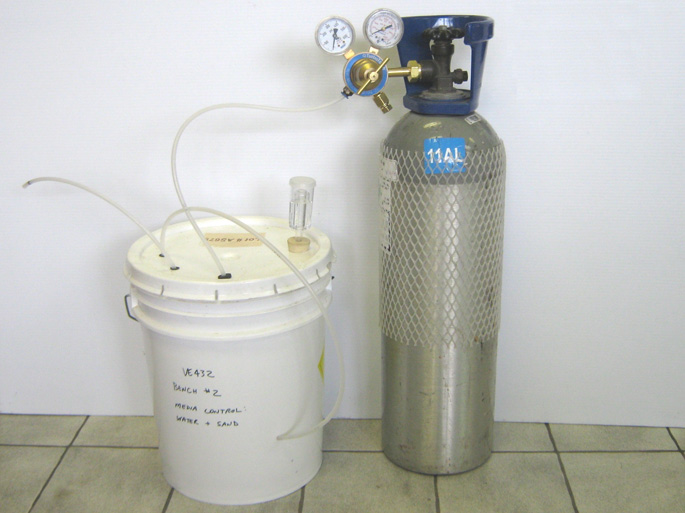National Award Winning Project
Each year the Federation of Canadian Municipalities (FCM) recognizes municipal governments along with their private-sector partners for implementing innovative projects that contribute to sustainable community development.
The City of Kingston is a winner in the Brownfield Project category of this year’s Sustainable Communities Awards program. At a former tannery site, and the current location of a busy rowing club, the City selected an innovative in-situ treatment technology to minimize arsenic contamination flowing into the Cataraqui River.
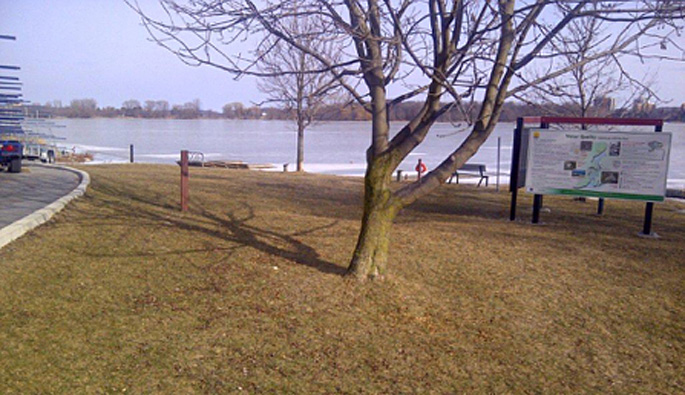
Soils were leachate toxic waste for arsenic. Bulk soil concentrations were detected as high as 16,400 ppm for arsenic compared to the acceptable criterion of 18 ppm. Groundwater concentrations are up to 204,000 ppb arsenic compared to the acceptable criterion of 1,500 ppb.
The original remediation plans called for excavation of 1,000 tonnes of “worst case” soils including some beneath a building. Estimated off-site disposal costs were $500 per tonne. Groundwater flows through this area toward the Cataraqui River at an estimated rate of 5 m/year. To manage these impacts, installation of a solid barrier wall was also planned. The barrier wall for groundwater would also have required installation and on-going operation of a pump-and-treat system and off-site disposal of the arsenic-contaminated groundwater.
Vertex teamed with Milestone Environmental Contracting Inc. to develop a novel, alternative, cost-saving remedial plan which would involve no soil excavation.
Meetings with the City of Kingston & MOECC lead to approval for proof-of-concept bench-scale testing.
Arsenic (As) is a chemical element, so of course cannot be destroyed in the environment; it can only change its form. It exists in many valences and can be free or complexed with other molecules.
Arsenic can precipitate out of groundwater through reductive precipitation with oxidized iron minerals, particularly in the presence of sulphur compounds. Arsenic, iron, and sulphide form stable and insoluble complexes: Fe-As sulfide or arsenopyrite (FeAsS).
We established bench-scale microcosm reactors filled with sand and groundwater from the Site. Test cells (sealed HDPE plastic pails) were fitted with sampling ports, injection ports, and an air lock. The reactors were dosed with varying formulations of zero valent iron (ZVI) and fermentable organic carbon substrates. Nitrogen was injected into the test cells to purge oxygen from the systems.
Within three (3) weeks arsenic concentrations in groundwater dropped from 23,100 ppb to an average of 87 ppb in test cells (99.6% reduction) and to an average of 3.6 ppb after four (4) weeks (99.98% reduction). The targeted MOECC Table 9 standard is 1,500 ppb.
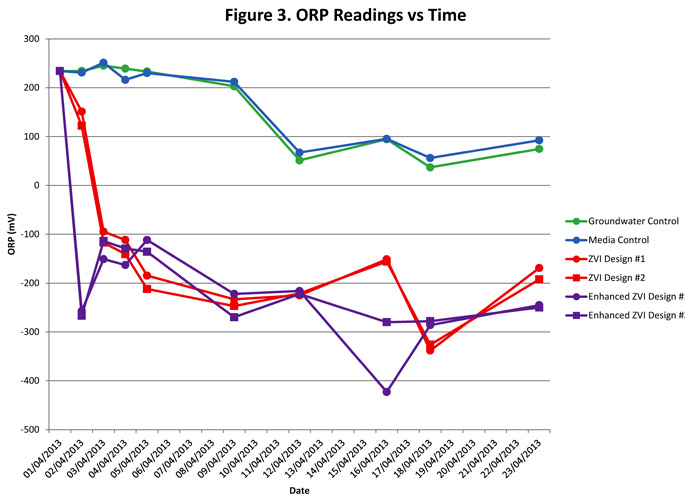
The ZVI treatment concept was decisively proven and a sole-source contract was awarded to Vertex and Milestone for installation of a ZVI permeable reactive barrier (PRB).
Both an injected PRB and a traditional “cut & fill” PRB, were designed for the installation.
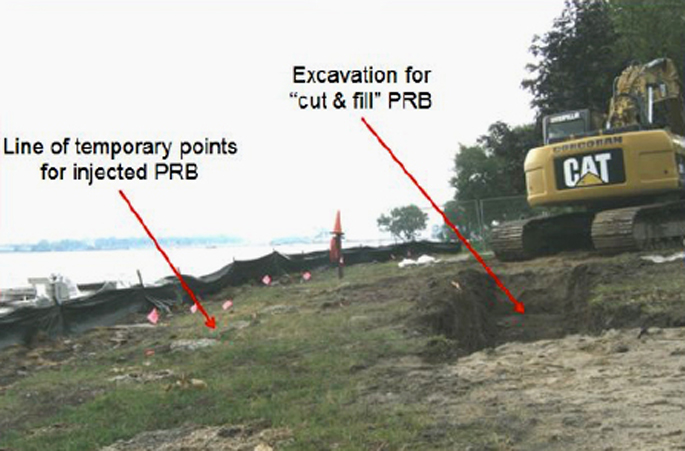
The down-gradient injected PRB was installed first close to the shoreline of the river.
A total of eleven (11) discrete injection points spaced 1.5 m apart were used to inject a total of 2,450 kg micro-scale ZVI from 1.5 to 3.5 mbgs.
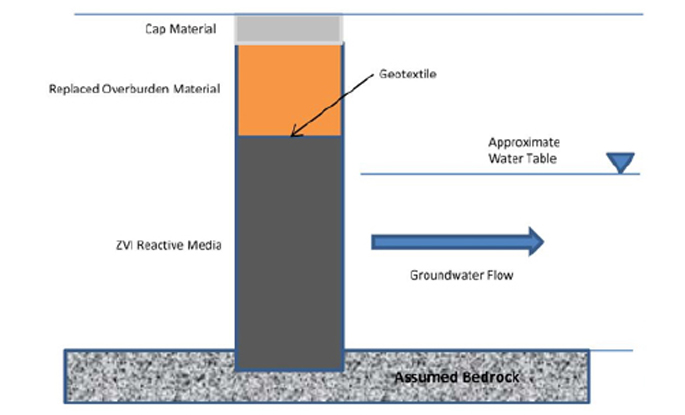
A traditional “cut & fill” PRB was then installed upgradient of the injection points. The PRB was 5.2 m long, 1.0 m wide and from 2.0 to 3.8 mbgs “keyed” into the underlying silty clay till at the site. A total of 9,000 kg macro-scale ZVI was mixed and placed with 12,600 kg of concrete sand.
Vertex completed QA/QC testing on batches of the ZVI/sand mixtures to confirm the targeted minimum 30% ZVI by weight was achieved.
The PRB design provides a groundwater retention time of more than 2 months, and the PRB lifespan is estimated at >20 years. Both the injected PRB and a “cut & fill” PRB, were installed, with both “keyed” into silty clay till &/or bedrock. As verified by laboratory testing and installed in the field, these in situ features are expected to provide protection of the downgradient water source for years to come at a fraction of the cost and with minimal disturbance to park users.
More information:
City of Kingston’s Emma Martin Park Remediation
Federation of Canadian Municipalities Sustainable Communities Awards


